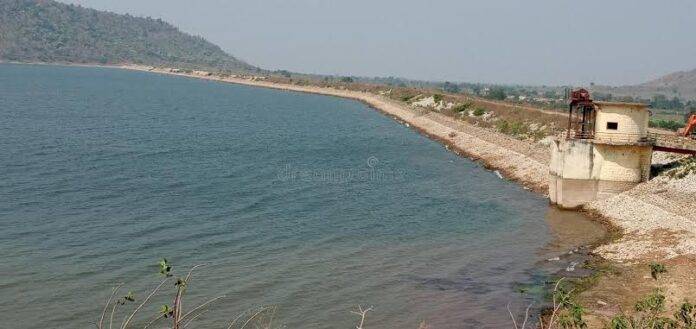
 |
Amalnala Reservoir
Rajura subdivision of Chandrapur district comprising of Rajura, Korpana, Jivti and Gondpipari blocks is a hotbed of land related cases. This subdivision was historically a part of the Hyderabad State and it later became part of Maharashtra – before becoming a part of Chandrapur district, it was part of Nanded district in Marathwada region. Under Nizam rule the ijardari land revenue system was followed in the area. This system was abolished by Maharashtra government as part of the larger large reforms movement with the lofty objectives of abolishing intermediate revenue farmers intermediaries, creating rights in favour of actual tillers and tenants, and bringing the farmers in direct contact with the state authorities.
In reality, as the experience of Shramik Elgar shows, the abolition of ijardars did not automatically create rights in favour of tillers and tenants. In fact farmers in Rajura subdivision, especially Adivasi farmers from the Gond, Kolam and Pradhan communities, face a range of land-related problems arising from the criminal negligence of a thoroughly inept and corrupt local bureaucracy, partly from the cultural factors that prevent Adivasis from asserting their rights and partly from the state’s unwillingness to resolve the issues in the region. Adding to their woes, the subdivision has a massive population of nontribals because of which tribals have no voice.
However, the good news is that slowly the tide is turning. The younger generation of Adivasis are gaining in understanding and confidence and speaking out against historical injustices. A recent example is from the village Nokari in Rajura taluka. The agricultural land of 32 Adivasi farmers was acquired by the irrigation department in 1983 to construct a reservoir namely the Amalnala reservoir. The lands were acquired under the Land Acquisition Act, 1894 and Awards were passed by the Land Acquisition Officer in favour of each Adivasi farmer.
The Awards dated between 1978 and 1983 provide the details of the land acquired and the total compensation amounts to be to the project affected Adivasis. (For example the Award in the name of Ramu Kulmethe shows that he was entitled to a total compensation of Rs.1342.13.) Although the Awards were passed the compensation amount was not paid and therefore the mutations were not made in the name of the Irrigation Department. The Amalnala reservoir was constructed and the land is today submerged even though on government record the titles continue to persist in the names of the Adivasis. In the 1990s the Adivasis of Nokari wrote letters to the government to allot them some agricultural land for livelihood but their requests fell on deaf ears.
In 2021 the irrigation department wanted to carry out some further works and they wrote to the revenue department officials to complete the mutation process and transfer the titles to the irrigation department. If this were 1983 such transfers would have been completed without any glitch. But last year the youths of Nokari decided to act and wrote a joint letter to the SDO, Rajura objecting to the mutations till the compensations are paid. They further demanded alternative agricultural land in stead of the land that has been submerged.
The grandchildren of the Adivasis who lost land in 1970s are demanding their rights after forty long years. They are planning to pursue their case in various forums. Only time will tell whether they win or lose, but for now it is a matter of great hope and celebration that young Adivasis have found their voice and the preparedness to fight. The youths of Nokari who are spearheading this struggle include Giridhar Pendor, Anil Parchake, Sunil Parchake, Sandeep Parchake, Rama Kotnake, Vimalbai Yerme and Manohar Gedam.
– Paromita Goswami


